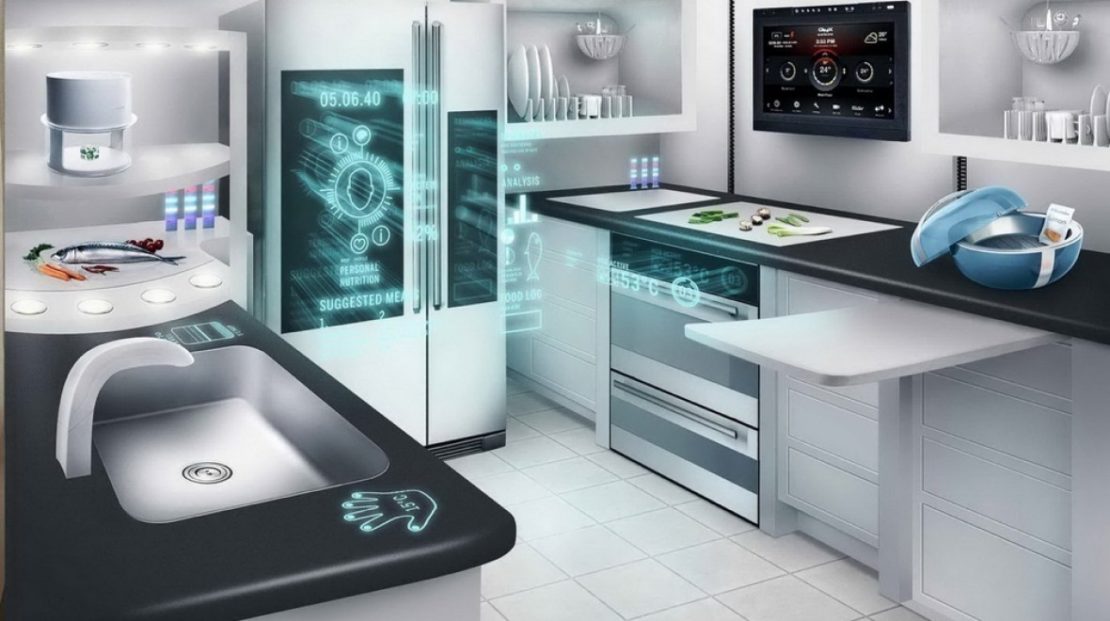Welcome to the home of the future
Between the Nest Learning Thermostat and the Amazon Echo, the smart home is already upon us. Objects as diverse as forks and toothbrushes are already networked and communicating with our phones.
While some much-vaunted developments—like the contact lenses that were set to monitor diabetes—seem stalled in the making, the world is still gearing up to spend around AU$400 billion on Internet of Things (IoT) systems in 2020.
And homes of the future will transform the lives of those that live within them.
Growing old gracefully
Australia is ageing. In 2016, Australians aged 65 and over made up 15 percent of the population; by 2096, one Australian in four will be over 65.
To coincide with this, smart homes are already transforming aged care, enabling older people to live in their own homes independently for longer.
For example, connected lights and networked motion sensors detect changes in behaviour patterns that might indicate if an elderly person needs help. Perhaps they haven’t moved for a while; or it’s long past breakfast and the kitchen light and kettle have not gone on; perhaps the stove has been left burning or the fridge door is open. The system can send alerts to family, carers, or even emergency services, enabling them to act promptly if disaster is suspected.
Additionally, smart floors, monitor position and movement, detect falls, and send alerts in much the same way. In the near future, they may even be able to predict falls based on changes in gait.
Medical device manufacturers are investing heavily in IoT through these advancements, but also through wearable technology that’s tailor-made for the elderly. Within this are smart watches, which issue medication reminders and communicate with pill box sensors to monitor medication use. From virtual assistants—perhaps robotic—through to smart implants that deliver diagnostics, or wearables that provide brain scans, the elderly home of the future will be fully integrated with the Internet of Medical Things.
30 billion ways to save time and energy
With around 30 billion devices set to be connected to the web by 2020, the IoT-enabled home is going to transform everyday life—not least by reducing chores. And it’s a revolution that extends to every room of the house.
In the kitchen, food wastage will be slashed as smart fridges monitor what’s ready to eat and what needs to be eaten now. Smart cupboards, bottles, and containers will detect when supplies are low and connect to automated ordering. Self-sustaining herb gardens will make fresh herbs a thing of ease. Meanwhile, a cocktail library will order refills for its spirits containers and suggest recipes based on what’s available.
In the bathroom, networked toothbrushes will time and measure brushing effectiveness, reporting to parents and incentivising kids to brush better. Connected scales will link in to medical systems and fitness trackers for better health.
In the hallway, remote locking technology coupled with video monitoring will mean no need to wait in for a tradesman or a delivery ever again. Smart thermostats paired with smart grid technology will take the effort out of energy-saving for even the laziest home-owner.
In the bedroom, babies will speak sooner thanks to talking teddy bears. Older children will chat to family members on “talkie” toys with just a limited set of connections—a safe alternative to phones. Smart mattresses will link up with home entertainment systems to ensure a good night’s sleep.
The future is here
IoT devices present both security and privacy concerns. Hacked gadgets have been used in massive botnets, such as Mirai, which delivered the largest DDOS attack on record. While the Alexa Echo that recorded a private conversation and sent it to a contact seems to have been a fluke, it raises justified concerns about the wisdom of keeping networked recording devices in our homes.
Still, the technology advancements in the field simply can’t be ignored. It’s set to transform industries from automotive to AV and products as diverse as medicines and toys.
So adapting to IoT should be high on the priority list for every CEO, argues futurist Jim Carroll. “People need to be taking decisions, because IoT fundamentally changes who you are and what you do,” he says.
Far from being within the realm of sci-fi, much of this technology is available now—and entrepreneurs avoid the consequences at their peril.
“It’s going to be massive,” adds Carroll. “It will parallel with e-commerce and reinvent entire industries.”
Discover what’s on the cards for the AV industry—and what’s coming down the wire at Integrate, Australia’s premier annual AV and integration trade show. Register free now to harness your AV potential and see the future defined this 22-24 August, ICC Sydney.
-
Stay up to date with the latest news, industry insights and Integrate updates.
- Subscribe

